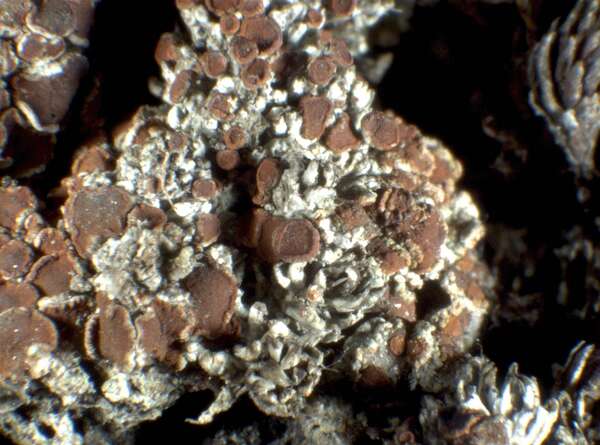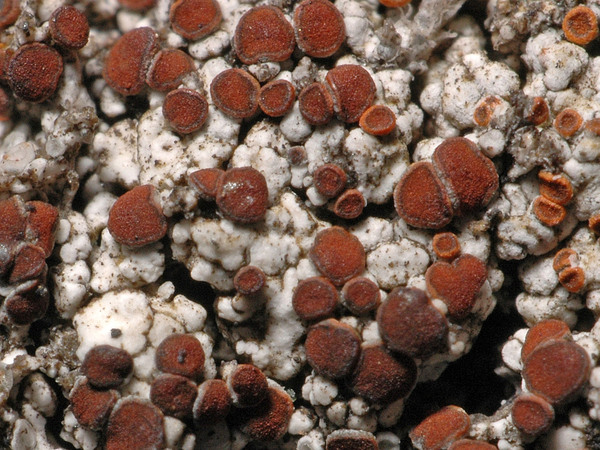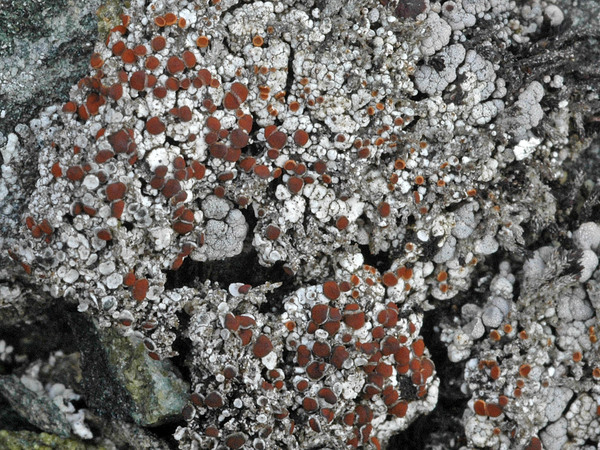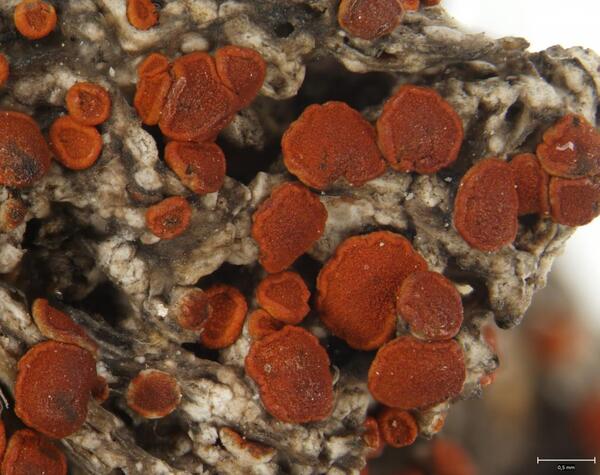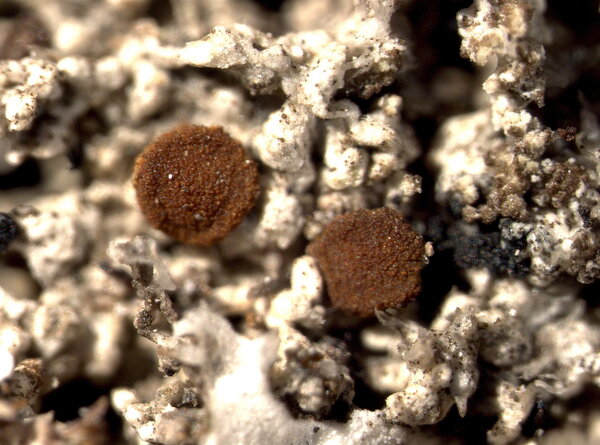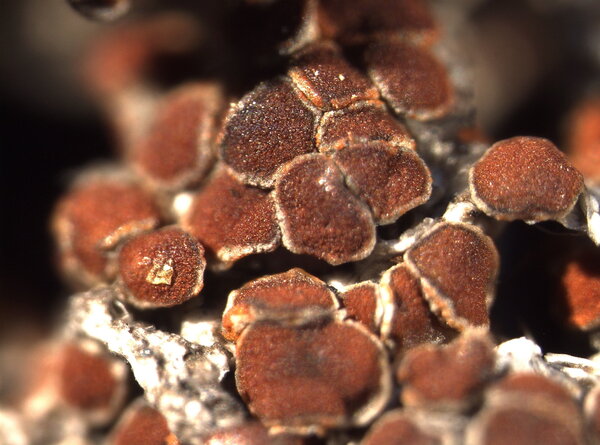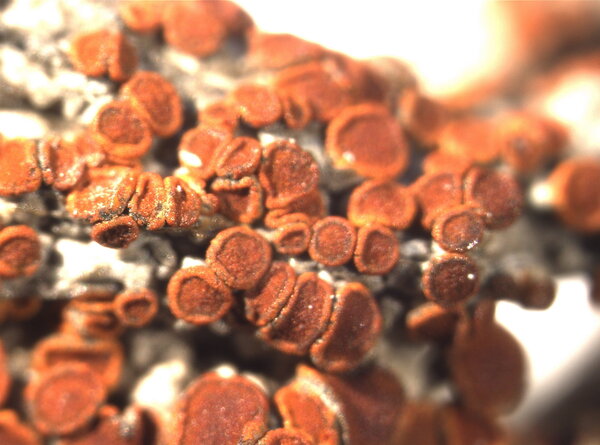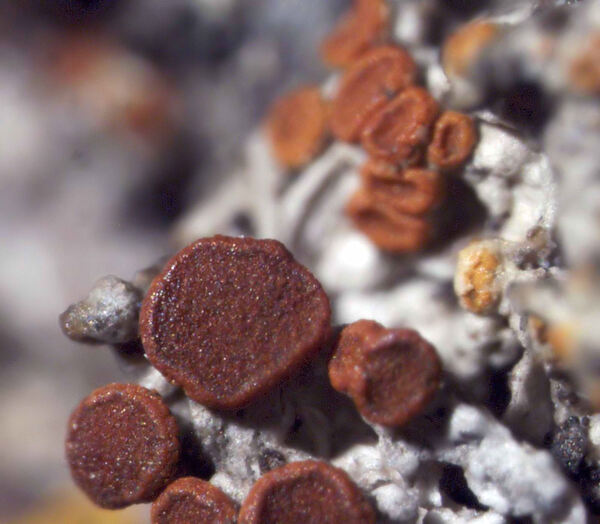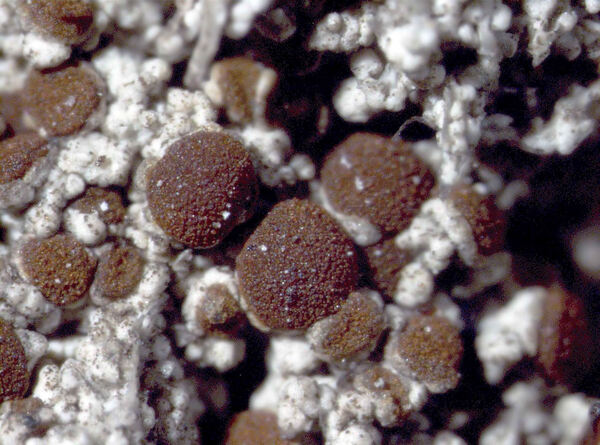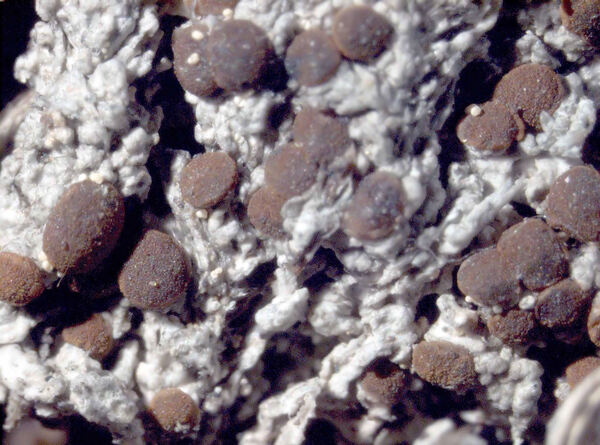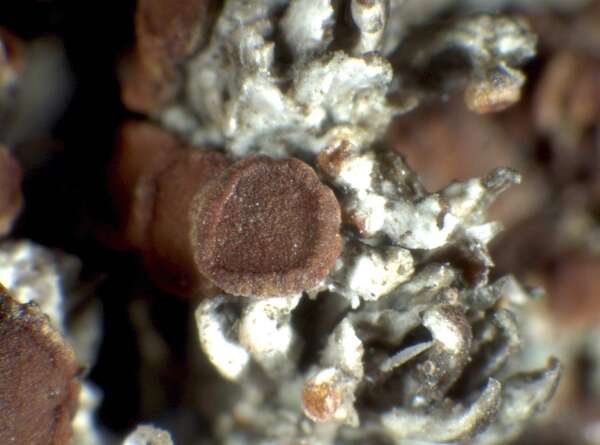Blastenia ammiospila (Ach.) Arup, Søchting & Frödén
Nord. J. Bot., 31: 67, 2013. Basionym: Lecidea ammiospila Wahlenb. ex Ach. - Meth. Lich. Suppl.: 13, 1803.
Synonyms: Blastenia ferruginea var. muscicola (Schaer.) A. Massal.; Callopisma caesiorufum var. ammiospilum (Ach.) Jatta; Caloplaca ammiospila (Ach.) H. Olivier; Caloplaca caesiorufa sensu Jatta p.p.; Caloplaca cinnamomea (Th. Fr.) H. Olivier; Caloplaca discoidalis (Vain.) Lynge; Caloplaca ferruginea f. vacillans Th. Fr.; Caloplaca ferruginea var. ammiospila (Ach.) Th. Fr.; Caloplaca ferruginea var. cinnamomea Th. Fr.; Caloplaca ferruginea var. muscicola auct.; Caloplaca vacillans (Th. Fr.) H. Magn.
Distribution: N - Frl (Tretiach & Hafellner 2000), Ven (Caniglia & al. 1999, Nascimbene & Caniglia 2003c, Nascimbene & Marini 2007, Nascimbene 2008c), TAA (Nascimbene & al. 2007b, 2022, Nascimbene 2008b, Bilovitz & al. 2014, 2014b), Lomb, Piem (TSB 34121), VA (Piervittori & Isocrono 1997, 1999), Emil (Dalle Vedove & al. 2002, Fariselli & al. 2020). C - Tosc (Benesperi 2007, Benesperi & al. 2007), Abr (Gheza & al. 2021).
Description: Thallus crustose, pale grey to whitish, very thin, continuous to small-verrucose. Apothecia frequent, biatorine/zeorine, sessile, constricted at base, 0.5-1(-1.5) mm across, the disc rusty red to brownish black in sun-forms, flat to finally convex, with a roughened surface, the proper margin rather thick, smooth, persistent, often undulate-crenulate with age, sometimes slightly paler than disc; a grey thalline margin is usually visible on the underside of the apothecia. Proper exciple prosoplectenchymatous, C+ purple; epithecium orange-brown, granular, K+ red, C+ purple; hymenium colourless, not inspersed with oil droplets, 70-85 μm high; paraphyses coherent, simple or sparingly branched and anastomosing, 1.5-2(-3) μm thick in lower part, the apical cells only slightly wider; hypothecium colourless. Asci 8-spored, clavate, functionally unitunicate, apically thickened with a broad internal beak, the inner part of apex and external cap I+ blue, Teloschistes-type. Ascospores 2-celled, polarilocular, hyaline, ellipsoid, sometimes slightly curved, (11-)13-16(-18) x (5-)6-8(-9) μm, the equatorial thickening (“septum”) 3-5(-7) μm (1/2-1/4 of spore length). Pycnidia orange-red, immersed. Conidia bacilliform, rarely narrowly ellipsoid, 3-5 x 1-1.5 μm. Photobiont chlorococcoid. Spot tests: thallus K-, C-, KC-, P-; apothecia K+ red, C+ red. Chemistry: thallus without lichen substances; chlorinated anthraquinones in both apothecial disc and exciple; Cinereorufa-green in traces only.Note: a mainly arctic-alpine to boreal-montane, bipolar lichen found on terricolous mosses and plant debris, more rarely on decaying, rather soft lignum or on small shrubs (Vondrák & al. 2020), most frequent above or near treeline (Alps, N- and C-Apennines).
Growth form: Crustose
Substrata: bark, lignum, soil, terricolous mosses, and plant debris
Photobiont: green algae other than Trentepohlia
Reproductive strategy: mainly sexual
Commonnes-rarity: (info)
Alpine belt: very common
Subalpine belt: rather rare
Oromediterranean belt: absent
Montane belt: absent
Submediterranean belt: absent
Padanian area: absent
Humid submediterranean belt: absent
Humid mediterranean belt: absent
Dry mediterranean belt: absent

Predictive model
Herbarium samples
Growth form: Crustose
Substrata: bark, lignum, soil, terricolous mosses, and plant debris
Photobiont: green algae other than Trentepohlia
Reproductive strategy: mainly sexual
Commonnes-rarity: (info)
Alpine belt: very common
Subalpine belt: rather rare
Oromediterranean belt: absent
Montane belt: absent
Submediterranean belt: absent
Padanian area: absent
Humid submediterranean belt: absent
Humid mediterranean belt: absent
Dry mediterranean belt: absent

Predictive model
| Herbarium samples |
 INDEX FUNGORUM
INDEX FUNGORUM
 GBIF
GBIF
 DOLICHENS
DOLICHENS

